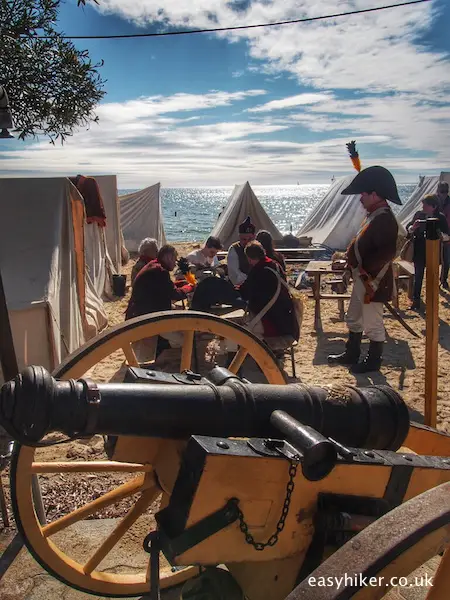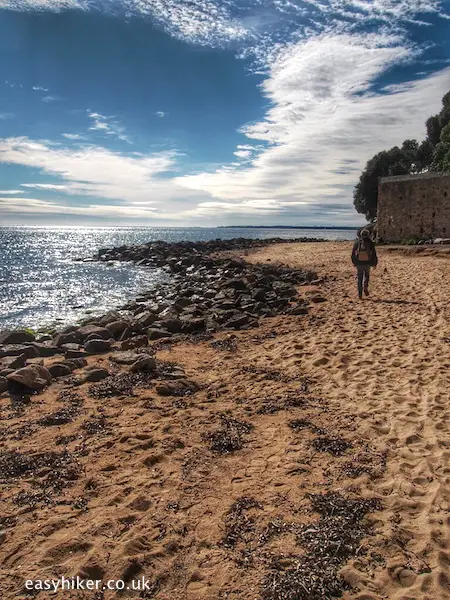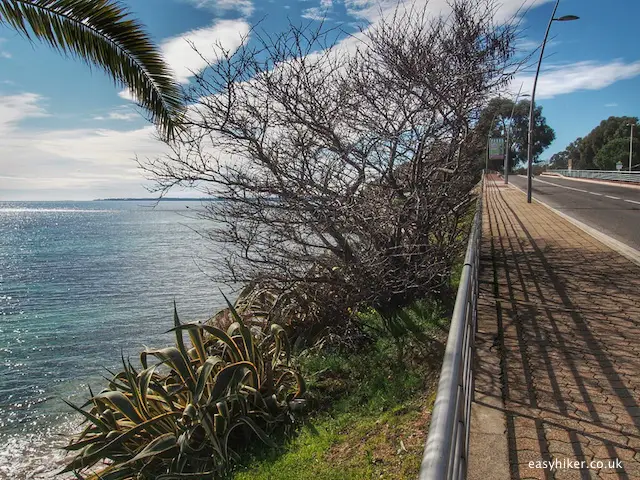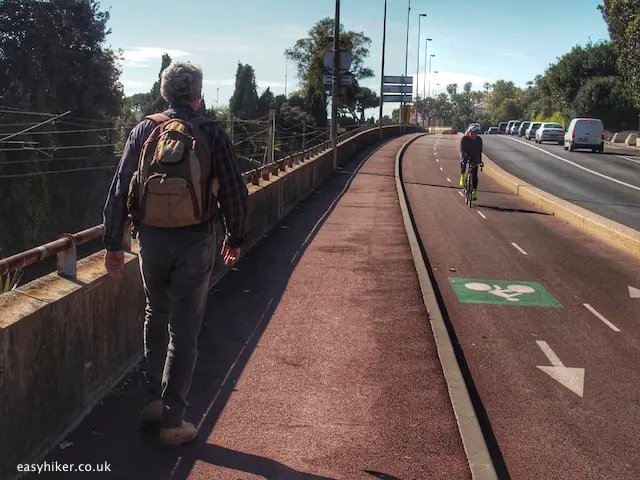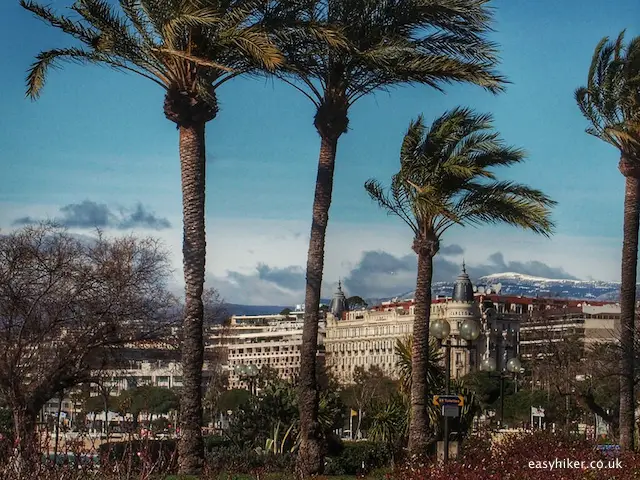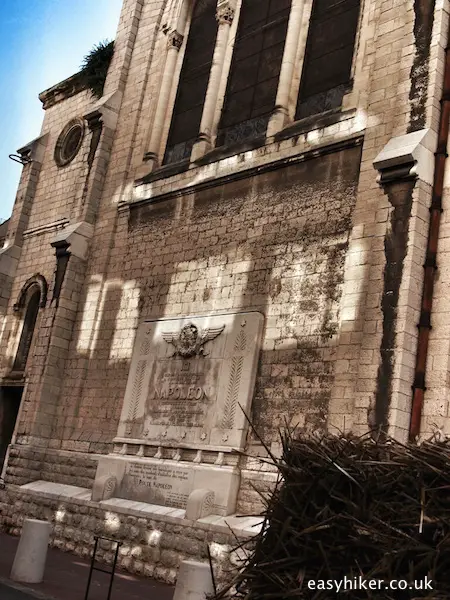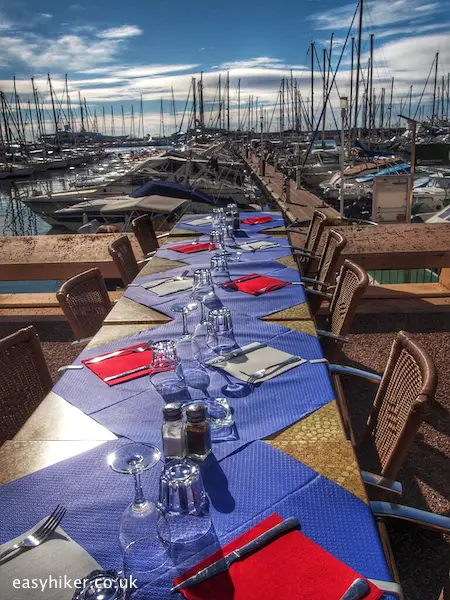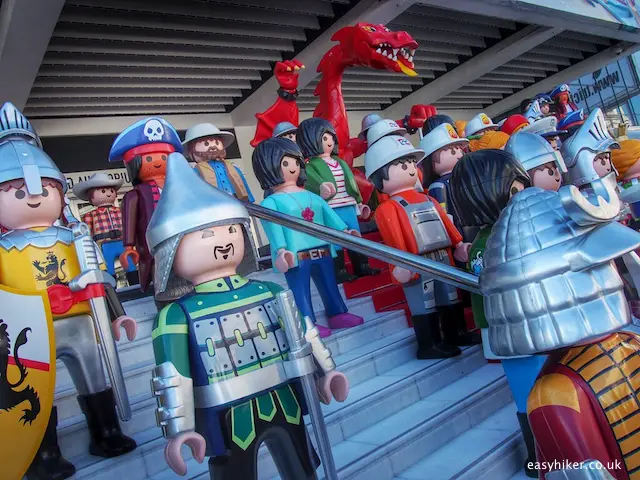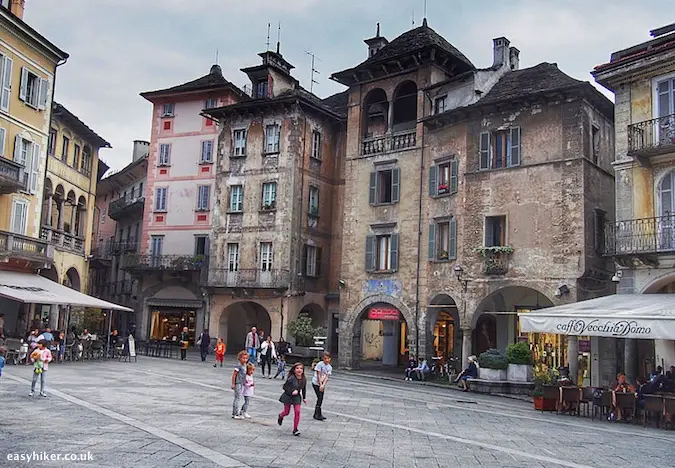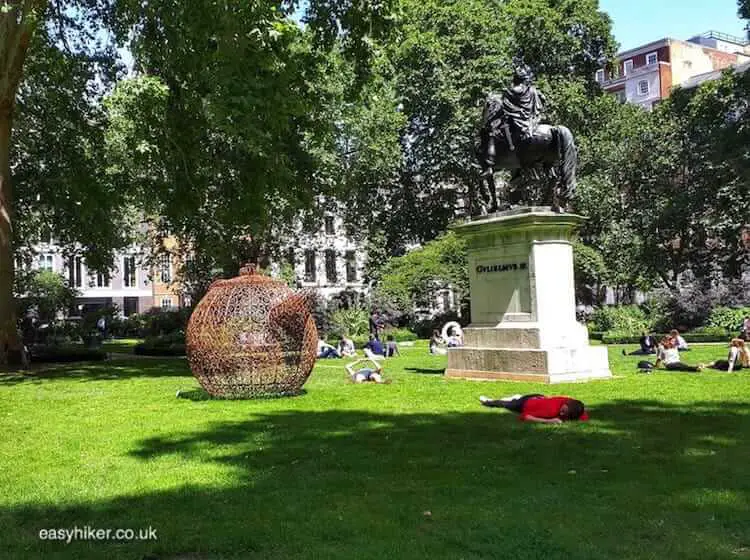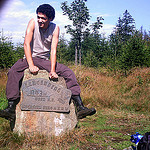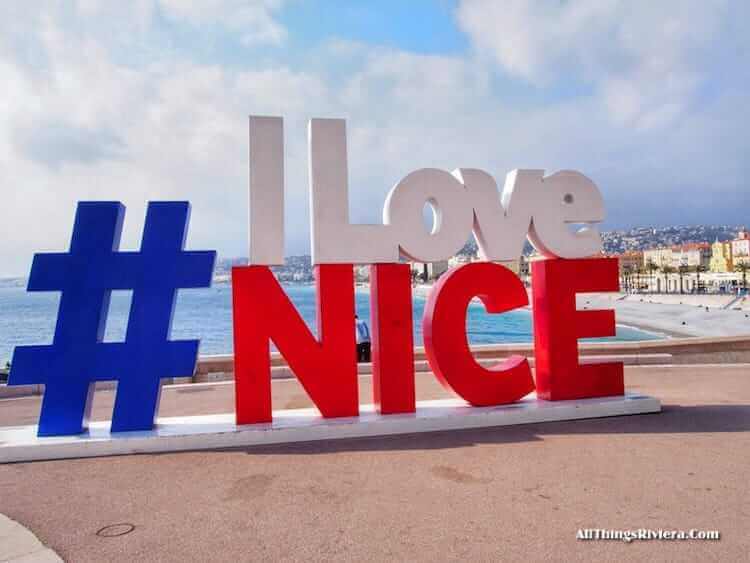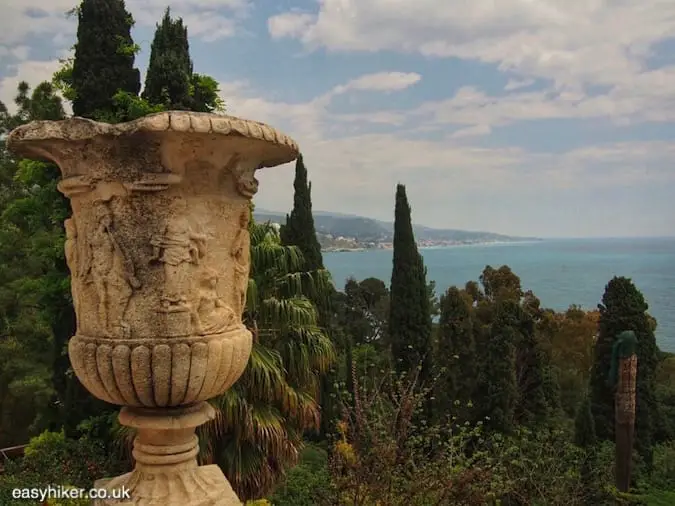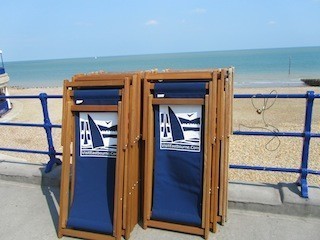200 years after the event, we followed the Emperor and his army on the first stage of their walk back to Paris and to Waterloo
On 1 March 1815, the recently deposed Emperor Napoleon landed with a small band of 1000 loyal soldiers in Golfe Juan near Cannes, arriving from his exile in Elba to reclaim the French throne.
Exactly two hundred years later, the municipal administration of what is now a small but lively resort town staged a re-enactment of this springtime for Napoleon, one of the most momentous events in 19th century history …
… while we made the walk that led the petit caporal and his men to Cannes, the first stage on their way to Paris, on to the battlefields of Waterloo and, eventually, to the petit empereur’s renewed exile and his death in Saint Helena.
When we say that we walked the same walk, however, certain qualifications need to be made. First, we can only guess at the exact location of the road that Napoleon’s party took 200 years ago.
Springtime for Napoleon Reenacted
They proceeded mainly on foot (although a few horses had been purchased in Golfe Juan), presumably on a road or a path near the beach where the railway line now runs, between the dunes and the swamps for which the area was known at the time.
Today, there is no continuous footpath between the tracks and the sea, and you can just about squeeze by the concrete wall on the way from one Golfe Juan beach to the other, but when you get to the big railway bridge, you have to climb the stairway and continue on the main road.
Secondly, since the army’s disembarkment started at 2:30 pm (and took several hours) and since the troops still had to make their way to Cannes, the only near-by settlement large enough to feed a contingent of 1000 men at short notice, the men walked at night.
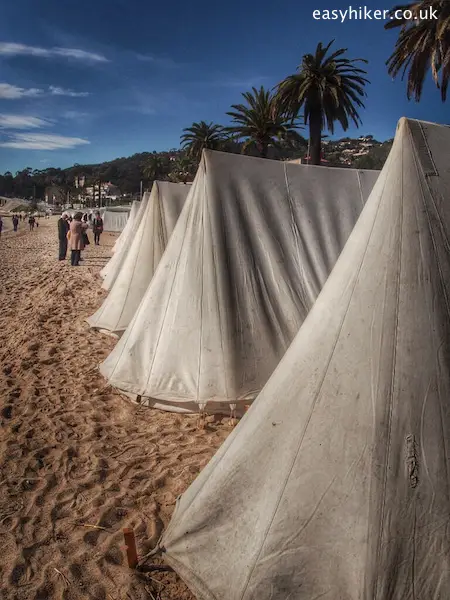
Actually, they waited on the beach until midnight, mainly to give General Cambronne – who had been despatched to Cannes immediately after the landing – the time he needed to arrange everything for the arrival of the troops. (This may have been only a small army, but even so, 1000 men could not just walk into a roadside inn and order something a la carte.)
At first, Cambronne had told the officials in Cannes that he had come from Elba only to bring some “old and sick” soldiers to the mainland for medical treatment, but at 7:30 p.m. he let the cat out of the bag when he requested 3,000 rations of bread and meat to be delivered at midnight.
The officials had initially been relieved to see Cambronne, having feared an attack by North African pirates when hearing about the landing of a ship, but I bet they had mixed feelings on finding out who exactly it was who was on his way to their little town.
And finally, road and coastal region were nearly uninhabited in the early 19th century, even Cannes itself was only a small village, used mainly as a harbour for the perfume industry of Grasse, the more important town at the time.
Victor Hugo made the same walk in 1839, in memory of Napoleon, and reported that he failed to meet a single human being until had almost arrived in Cannes (when he encountered a woman washing clothes), at which stage he must have already been far down the Croisette. (He obviously did not make his walk during the Film Festival fortnight.)
The beach road from Golfe Juan to Cannes is certainly no longer as idyllic as it must have been back then – it now is a four-lane highway. The good news is that it is largely devoid of distractions, and that, combined with the constant car noise, can induce a Zen-like detachment, which leaves your mind free to think of the men who walked this very stretch 200 years ago. What would Napoleon and his troops have been thinking?
Napoleon in 1815 still had considerable political capital, which was reflected by the conditions of his exile in Elba – he had retained the title of Emperor and was given command over several hundred men in arms.
But now, he had staked it all on one throw of the dice. His small army was no match for a determined foe, although ultimately, this, a determined foe, was exactly what failed to materialize.
Grenoble would become the decisive turning point of the enterprise when the army that had been despatched to send him home joined the rebels. (“Soldiers”, Napoleon had addressed them, “if there is a single man among you who wants to kill his Emperor, now is the time to step forward.”)
“Before Grenoble, I was a bandit,” Napoleon would later recall, “afterwards, I was a prince.” When he arrived in Paris two and a half weeks later, Louis XVIII had already run away.
Why was it so easy? In some places, there was a lack of means to stop him, in others a lack of will, and nearly everybody was perplexed at the speed with which events were unfolding. Ultimately, there was no shortage of people along the way who wanted Napoleon to fail, only a shortage of people willing to do something about it.
Our walk ends in Cannes …
… on the far side of the Croisette opposite the Festival Palais, where Napoleon’s army arrived in the early hours of the morning.
Their camp would have been enclosed by the modern streets of the Rue des Belges (where, on the corner with Rue St Honoré, the Emperor’s tent was erected), Rue des Antibes, Rue Bivouac Napoleon and Rue Buttura.
A plaque on the side wall of the church of Notre Dame de Bon Voyage, where a much smaller chapel would have stood in 1815, commemorates the night of the Emperor’s return to France.
But whereas Golfe Juan was giving its all to celebrate the anniversary, all restaurants having been decked out in the bleu-blanc-rouge of the republican tricolore …
… Cannes appeared to be indifferent to the historic importance of the day and much more concerned with the Festival des Jeux which had attracted long lines of visitors to the Palais. But then, we spotted them, on a stairway of the very same Palais …
… Napoleon’s army, willing to make a stand for liberté, égalité, playmobilité.
And there, apparently, was the Emperor himself, in his trademark triangular hat. Perhaps, after all, the Cannes officials were not that far off the mark when they thought the country had been invaded by pirates.

